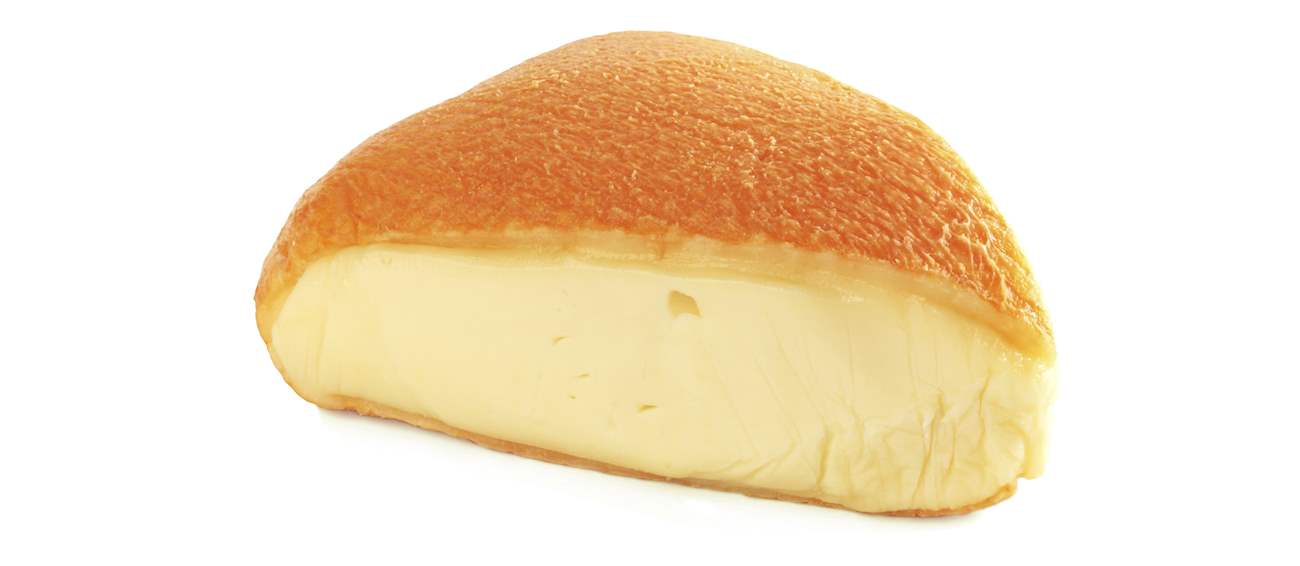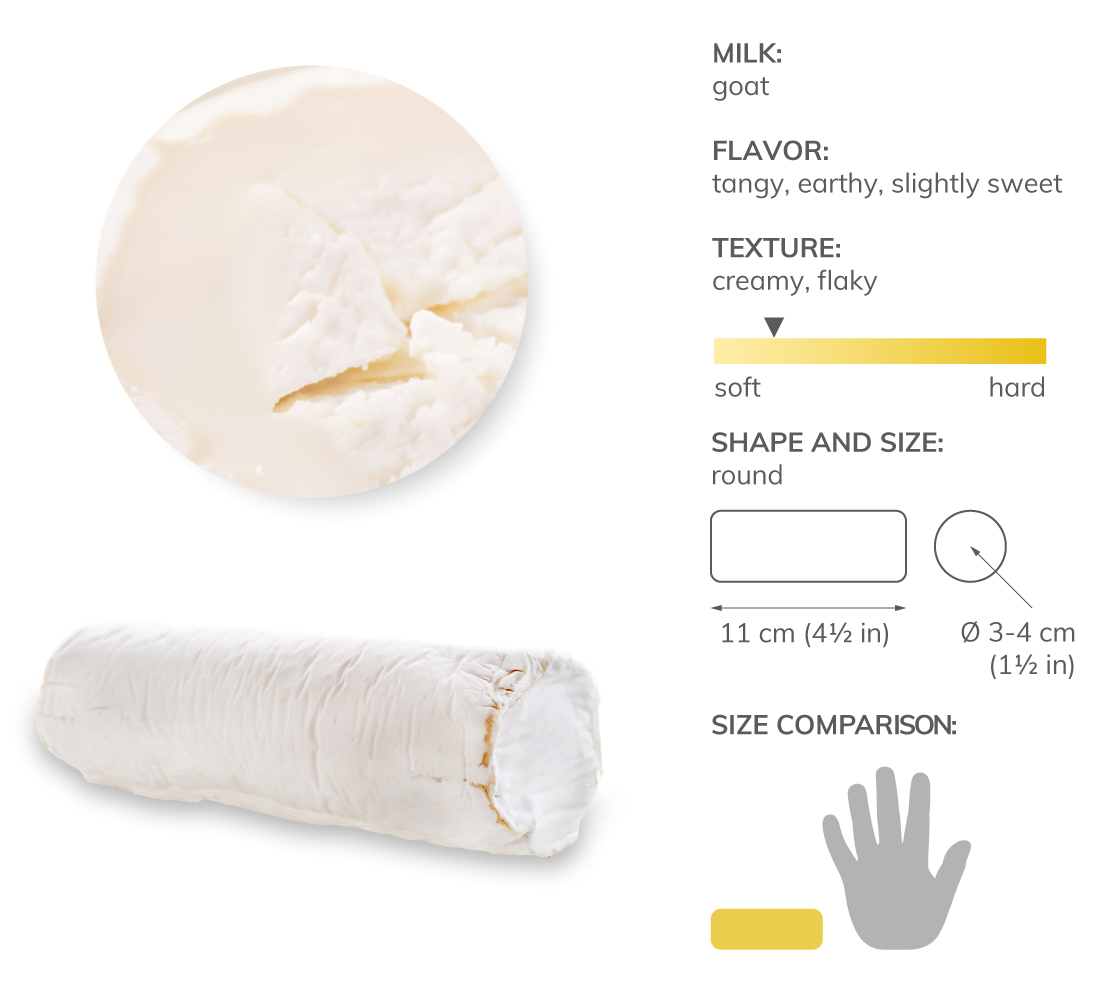Best Néo-Aquitain Pasteurized Milk Cheese Types
Buche de Chevre is a French cheese originating from the Poitou-Charentes region. Made from goat's milk, this soft cheese has a white color, bloomy rind, and a creamy, flaky texture. The flavors are tangy, earthy, and slightly sweet. The cheese is shaped into a log and it must mature for at least 7 days before consumption.
It is recommended to serve Buche de Chevre with crusty baguettes, fruit, or honey. The cheese can also be used in salads and quiches. Pair it with a glass of robust red Bordeaux wine or a glass of crisp white wine from the Loire Valley.
THE BEST Buche de Chevre Cheeses
Chaumes is a French soft or semi-soft cheese made from cow’s milk. Its rind is washed, and its color is pale yellow. The cheese has a strong aroma, a supple, creamy, springy, and smooth texture, and a complex, nutty flavor. The name chaumes can be literally translated as stubble.
It ages for about 4 weeks, after which it can be grilled or consumed on its own, accompanied by a piece of crusty bread. There is also a spreadable version of this cheese, known as chaumes la crème.
Etorki is a French cheese originating from the Mauléon-Licharre commune in the Pyrénées. This hard cheese is made with pasteurized sheep's milk. It has smooth, creamy, and supple texture, earthy aroma, and a mild, sweet flavor that is reminiscent of burnt caramel.
Etorki is pulp-pressed and uncooked, then left to mature for 3 to 6 months. It is recommended to serve it with fruit and bread, or use it in sandwiches. For the most authentic experience, pair it with Txacoli, a slightly sparkling white wine from Basque.
Invented in 1976, Saint Albray is a flower-shaped French cheese made from pasteurized cow’s milk. It ripens for 2 weeks, and each petal consists of a half pound of cheese. This soft cheese has an edible washed rind and a creamy texture, while the flavors are mild, nutty, and sweet.
It is recommended to pair Saint Albray with white bread, nuts, and wines such as Pinot Noir or Chianti.
Pair with
Petit Basque is a French semi-hard cheese produced in Basque in the Pyreneés Mountains. The cheese was originally hand-made by shepherds from leftover curds from milking the sheep, and it's made from sheep's milk nowadays as well.
The natural rind hides a dry, smooth, and creamy texture. After 70 days of aging, the cheese develops a basket-weave pattern. The aromas are fresh and milky, while the flavors are mild, earthy, subtle, fruity, and sweet with a nutty finish. It's recommended to pair it with fresh fruit, grilled vegetables, or cured meat.
Trappe d'Echourgnac is a French cheese produced in Dordogne at the Abbaye Notre-Dame de Bonne Espérance. The cheese is made from cow's milk, according to a traditional recipe based on Port Salut. The rind has a dark brown color, and underneath it, the texture of the paste is supple and semi-soft.
The flavors are mild, full, rich, smoky, and balanced, with distinctive aromas of walnuts. When cooked, the cheese becomes slightly stringy and runny. It's recommended to use it as a stuffing for ravioli and pair it with a glass of cider.
Le Brebiou is a French cheese hailing from Pyrénées-Atlantiques, where it's been produced since 1994 by Fromagerie des Chaumes, which is owned by Bongrain. The cheese is made from pasteurized sheep's milk and it's aged for 2 weeks.
Underneath its bloomy rind with markings from the linen wrappings and hopps, the texture is soft, firm, smooth, and creamy. The aromas are musty and mushroomy, while the flavors are mild, sweet, milky, and tart near the center. Nowadays, Le Brebiou is sold in full-fat and low-fat versions (the low-fat version contains 10% fat and it's known as Brebiou ligne et plaisir).
Clochette is a French cheese hailing from the region of Poitou-Charentes. The cheese is made from goat's milk and it's usually left to age for 2 to 3 weeks in cellars before consumption. The name of the cheese means little bell, referring to its conical shape.
Underneath its dry wrinkly rind, the texture is tender, smooth, creamy, and firm. The aromas are pleasant, hay-like, and goaty, while the flavors are powerful and warm. It's recommended to let the cheese come to room temperature, then serve it with olives and nuts.
Pair with
THE BEST Clochette Cheeses
TasteAtlas food rankings are based on the ratings of the TasteAtlas audience, with a series of mechanisms that recognize real users and that ignore bot, nationalist or local patriotic ratings, and give additional value to the ratings of users that the system recognizes as knowledgeable. TasteAtlas Rankings should not be seen as the final global conclusion about food. Their purpose is to promote excellent local foods, instill pride in traditional dishes, and arouse curiosity about dishes you haven’t tried.




